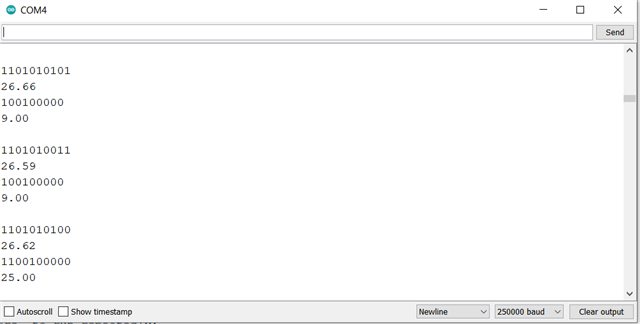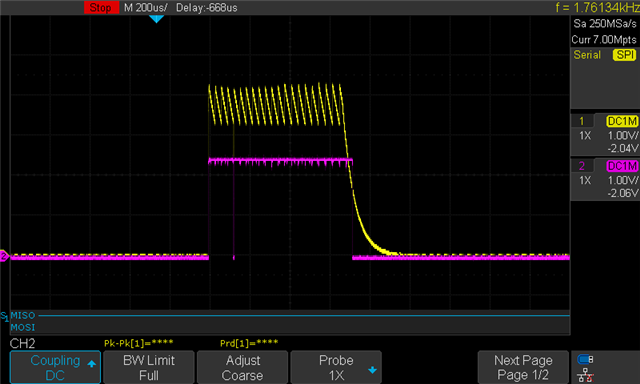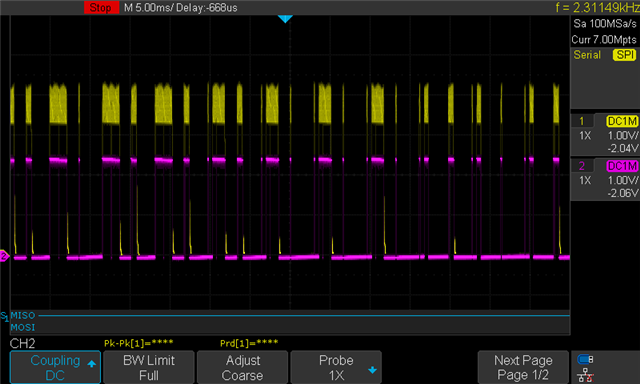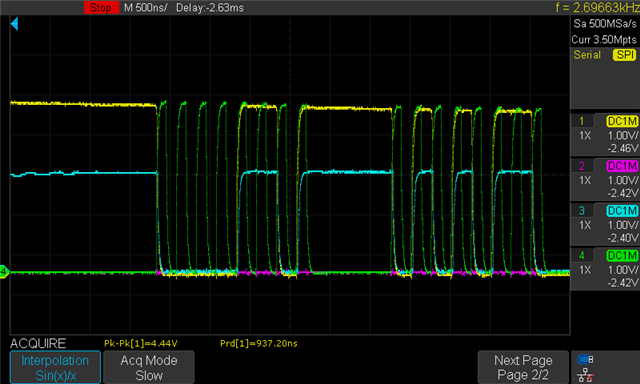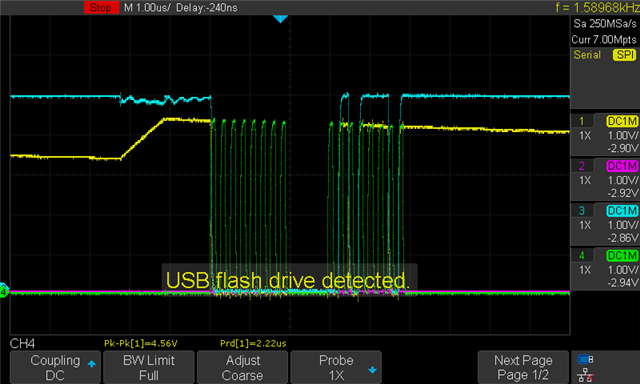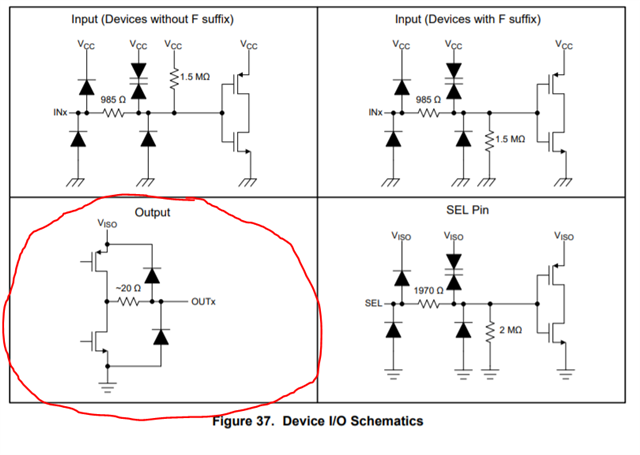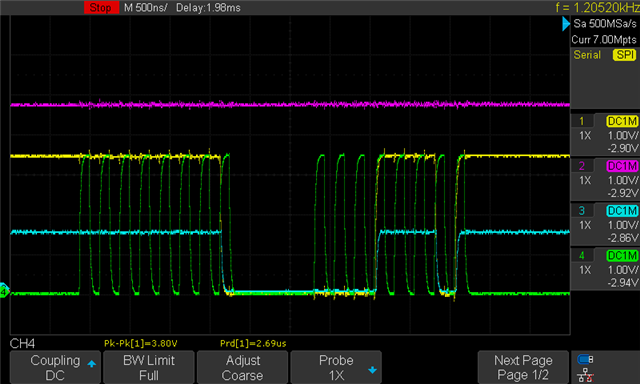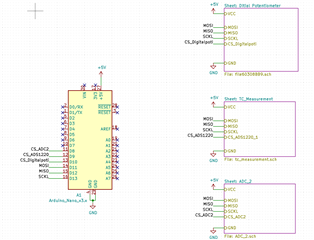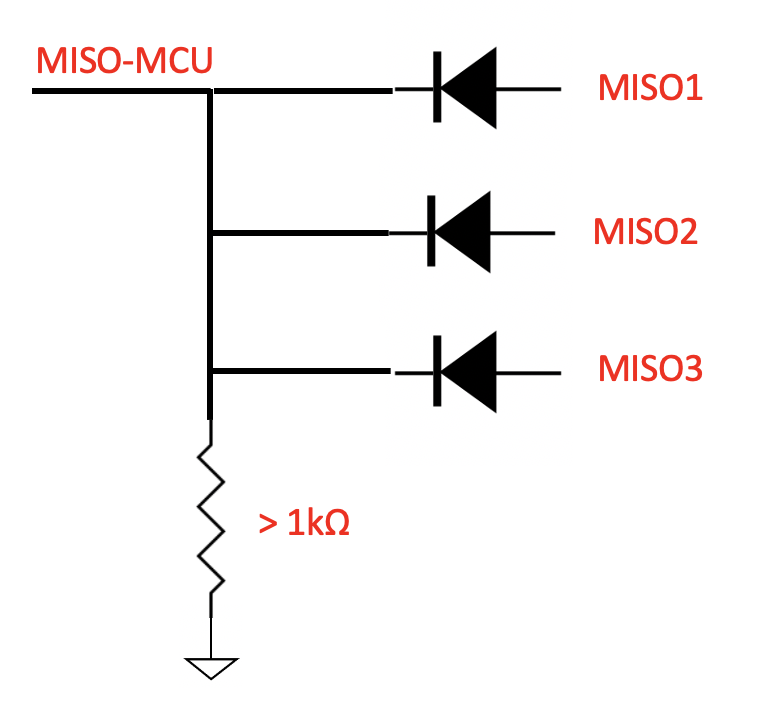Other Parts Discussed in Thread: ADS1220, ISO7741
Hello all,
I am currently designing a controller for one of our lab-furnaces. I use a two ISOW7841 (with the F-suffix) as digital isolator for two ADS1220, to prevent noise in the measurement. This works great as long as I just use 1 ISOW7841. However, as soon as I solder the second ISOW7841 , I get some strange noise in the signal (onboard chip temperature of the ADS1220):
If I remove all except one ISOW7841, everything works as excepted, no noise. But if I add both, I always get this noise spikes. Sometimes its better, sometimes its worse. Usually, one ISOW-ADC combo gives a better result:
The strange thing is that as soon is a start heating the “idle” isolator with a soldering iron, the noise completely disappears, but comes back as soon as it gets cold again.
I already tried completely new parts (new ADS1220, new ISOW7841, and also started with a fresh PCB and new parts), but the noise is always present. So it seems that there is some problem with my PCB design, but I don’t know what it could be. Here is the schematic of how I connected the ISOW-ADC, it's mostly the same for both ADS1220 (the difference starts behind the AIN0-AIN3, but are yet not soldered onto the pcb):
I am very thankful for every kind of feedback/input
Best regards
Manuel


